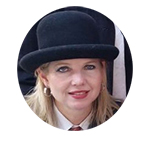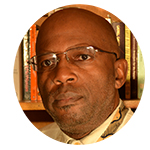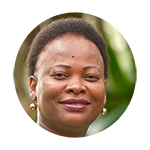According to Austin (1998:34), language is a tool used by human beings to communicate with each other. All languages have communicative value, meaning, and allow people to share thoughts, feelings, ideas, and exchange knowledge and opinions. No language
is better or worse than the other, as all languages are equal in terms of their value and function. On the other hand, language dominance is a social process in which different languages are assigned different levels of importance, such that one language
and its speakers carry higher social, economic, and political status than others. Subsequent to this practice, certain speakers struggle for recognition, while others enjoy a broader audience. Addressing language dominance, one needs to remember that
language is not naturally hierarchical and that one must respect linguistic diversity and human rights at both individual and collective level. The concept of listening to one another then becomes a challenge, hence the theme: ‘Hearing you hearing
me’ is so important in the 21st century.
How then can we as people resist or disrupt language dominance:
• Name and trace the history of language dominance
• The effects of inequity in daily language usage – not hearing each other
• The awareness and significance of multilingualism – learning other languages
• What universities can do and should do on a practical level to promote multilingualism
These are some of the aspects we look forward to discussing in the forthcoming webinar.
Date: Friday, 17 September 2021
Topic: Hearing you, hearing me
Time: 12:30-14:00
Facilitator:
Dr Elias Malete
Senior Lecturer, African Languages, UFS
Panellists:
• Prof Angelique van Niekerk
Associate Professor and Head of Department
Department of Afrikaans and Dutch, German and French
University of the Free State
• Prof Nhlanhla Maake
Professor and Language Practitioner of Sesotho
• Prof Nobuhle Hlongwa
Dean and Head of the School of Arts
College of Humanities
University of KwaZulu-Natal
Bios of speakers:

Prof Angelique van Niekerk is Associate Professor at the University of the Free State and the HOD in the Department of Afrikaans and Dutch,
German and French. Her research focus is on applied linguistics within the field of semantics and pragmatics and on the linguistic nature of advertising communication. She has published many accredited publications within linguistics and communication
sciences, in which she integrates her interest in both fields. She has a passion for teaching and (blended learning) course design within language acquisition. This has resulted in different registered SLPs within the department, focusing on Afrikaans
as foreign language and Dutch as foreign language.

Prof Nhlanhla Maake is currently the Managing Director of the biggest merchandising company in South Africa, a position he has held since 2018. He has just completed a translation of SM Mofokeng’s Pelong ya Ka into English. The
book is to be published in London, New York, and Calcutta in 2021 under the Elsewhere Texts series, edited by Gayatri Spivak and Hosam Aboul-Ela.
He has held several academic positions nationally and globally and has served on several
language task teams under the auspices of the Department of Arts and Culture; as a member of the Parish Pastoral Council at Our Lady of Mt Carmel in Thokoza; as a member and chairperson of the Catholic Bible College; as member and acting Chairperson
of the English National Language Body of PANSALB; as Council member of the English Academy of Southern Africa; as Council member of the Afrikaanse Taalmuseum en -monument (2015 to 2017); and as Council member of the Wits Council on Education.
Prof Maake was an NRF (National Research Foundation) rated scholar (2006-11) and has held fellowships at Aarhus University (1983), on the Southern African Research Program (Yale University, 1989), Ernest Oppenheimer fellowship (UCT, 1992), and the
Distinguished Scholars Programme (Wits, 1993). He was admitted to the Golden Key International Honour Society in 2005. He has presented papers and keynote addresses at more than 80 international and local conferences, is widely published, and has
won several literary awards and recognitions.

Prof Nobuhle Hlongwa is the Dean and Head of the School of Arts in the College of Humanities at the University of KwaZulu-Natal. She is the former Dean of Teaching and Learning in the College of Humanities and was the acting Dean and Head of the School of Religion, Philosophy and Classics for six months in 2016. Rated by the National Research Foundation (NRF) as a C2-rated social scientist for five years, Prof Hlongwa has more than 30 publications, including research articles, books, book chapters, and conference proceedings. She is currently a member of the Academic Advisory Board of African Languages on the Bloemfontein Campus, and a member of the Board of Directors of the International Congress of Onomastic Sciences (ICOS). She is a representative of the University of KwaZulu-Natal in the Community of Practice for the Teaching and Learning of African Languages (CoPAL), which forms part of the devolved governance structure of Universities South Africa (USAf).
She was a member of the Ministerial Advisory Panel on the development of African Languages in Higher Education. She completed her first post-doctoral supervision in June 2018. She is a member of the advisory board of the South African Journal of African Languages (SAJAL). She is assistant editor of the Alternation Journal. She is a reviewer for the National Research Foundation (NRF), as well as for a number of academic journals.